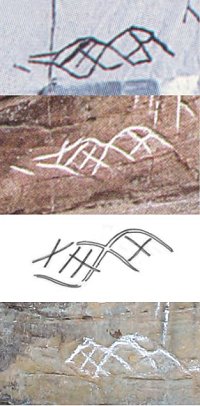
Top, Pyle's cloth tracing (1983:5)
Next, chalked by Pyle (Fell 1983:16)
Then, Fell's Figure E-8 (1983:14)
Bottom, chalked by unknown party, 2002
Photos © 1983 WV Div Natural Resources
Except bottom panel, © 2003 Roger Wise
Used with permission